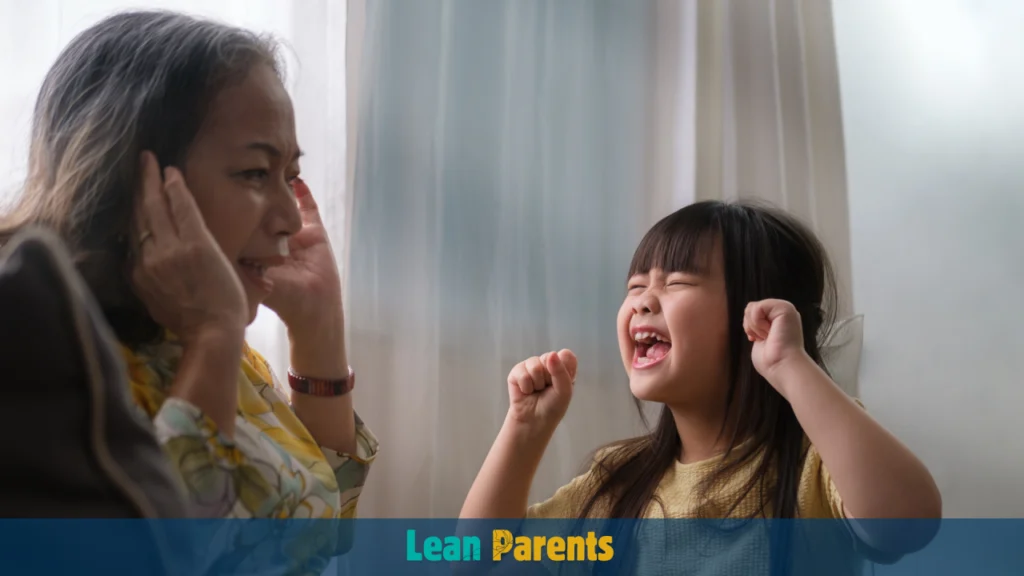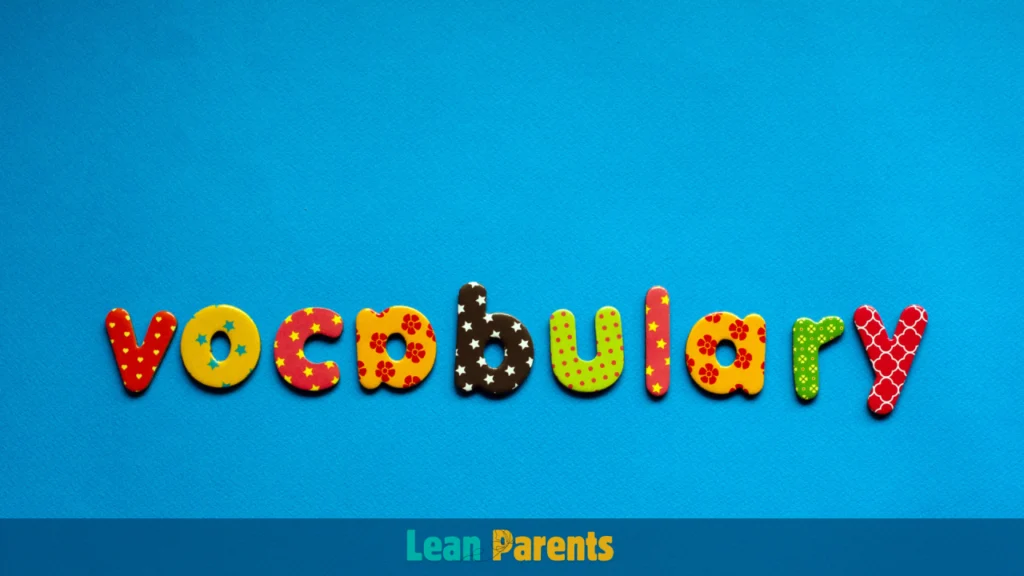Parenting is tough yet rewarding, especially with kids’ emotions. Anger is common, but with effective anger management, parents can guide kids to cope well.
This guide will show you five important ways to help kids deal with anger. We’ll use the latest research to help you teach your kids to handle their feelings. These methods will help your kids grow emotionally strong and handle anger in a healthy way.
Key Takeaways
- Time-outs can be effective for children younger than 7 or 8 years old1
- Parent-Child Interaction Therapy (PCIT) is helpful for children aged 2 to 71
- Collaborative and Proactive Solutions (CPS) address the root causes of disruptive behavior1
- Medication may improve a child’s receptiveness to behavioral interventions1
- Severe cases may require residential treatment or hospitalization1
Understanding Child Anger: Normal vs. Concerning Behaviors
Anger is a natural emotion that all children feel as they grow. It’s important to know the difference between normal anger and behaviors that need extra help.
Signs of Normal Anger Expression
Young children often have tantrums or get frustrated. These feelings come from needs like hunger or being tired. Most children stop having these big outbursts by age 7 or 8.2
Red Flags for Concerning Behavior
Some anger is okay, but too much or too intense can be a problem. Look out for aggressive actions like hitting or throwing things. Children with ADHD might get angry because they can’t focus or follow directions.2 Severe anxiety can also make children angry and defiant.2
Impact on Child Development
Uncontrolled anger can really hurt a child’s emotional growth and happiness. Seeing family arguments can make a child angrier.3 Problems with friends or being bullied can also make children angrier.3 Struggling in school or feeling stressed can make anger worse.3 Going through puberty can also affect a child’s anger.3
It’s key to tackle anger issues early to help kids manage their feelings. Medicine, therapy, and learning from parents can help kids with anger.2
The Science Behind Children’s Emotional Outbursts
It’s important to understand why kids have emotional outbursts. The limbic system in the brain is key in handling emotions4. As kids grow, their brains learn to control feelings and actions better. But sometimes, they struggle with anger and frustration.
The prefrontal cortex, which helps with making decisions and controlling impulses, grows a lot in kids and teens5. Problems in this area can make it hard for kids to handle their anger, especially when things get tough.
Also, how parents teach kids about emotions is very important4. Programs like the Family Check-Up and the Incredible Years series help kids manage their feelings better. They also do well in school and behave better, thanks to these programs4.
| Intervention | Key Focus | Target Audience |
|---|---|---|
| Family Check-Up | Teaching parents how to set limits and respond to difficult behaviors in young children | Parents |
| Incredible Years | Teaching a combination of social, emotional, language, and persistence skills | Children, parents, and educators |
Knowing why kids have outbursts helps parents and caregivers help them better5. If a child keeps being aggressive, it might be time to see a therapist5.
Helping kids with their emotions is a big job. We need to understand how the brain works and use good strategies to help. This way, we can support kids to grow and succeed45.
Creating a Safe Environment for Anger Expression

Managing anger in young kids starts with a safe and supportive place. A safe space lets kids express feelings in a good way6.
Setting Up a Calm-Down Corner
Make a calm-down corner in your child’s room or a quiet spot. It should have no distractions and tools like stress balls and coloring books. Tell your child to go there when they’re upset6.
Choosing Appropriate Calming Tools
Give your child different calming tools for emotional control. Try deep breathing, guided imagery, or physical activities. See what works best for them6.
Establishing Clear Boundaries
It’s key to have clear rules and expectations in this safe space. Teach your child how to say their feelings, like using “I” statements. Also, set limits on bad behaviors. Stick to these rules to create a good environment7.
With a calm-down corner, the right tools, and clear rules, kids can learn to handle anger well. This helps with talking, solving problems, and feeling better overall6.
“Anger is an emotional state that varies in intensity from mild irritation to intense fury and rage.” – Charles Spielberger, PhD7
Identifying Emotional Triggers in Young Children
It’s key to know what makes young kids angry. Things like hunger, tiredness, or stress can cause outbursts. Teaching kids to spot these triggers and find ways to deal with them is vital8.
Keeping a log of when kids get angry can help. It shows what usually makes them upset. This way, parents can prepare and fix the problem before it gets worse8. Talking openly about feelings helps kids understand and manage their anger better8.
Creating a supportive environment is important. It helps kids learn to handle their emotions. This skill is not just for now but also for their future8.
Remember, finding and fixing emotional triggers is a team effort. It needs patience, understanding, and a desire to learn with your child. With the right help, kids can grow up to be emotionally strong9.
“Helping children understand and manage their anger is one of the most valuable gifts we can give them.”
The Role of Parents in Anger Management
As a parent, your actions and responses are key in teaching your children to manage anger. By showing how to handle frustration and using clear communication, you help them learn to deal with tough situations. This way, they develop the skills needed to handle anger.
Modeling Appropriate Responses
Children learn from what they see, especially from their parents. When you stay calm and handle anger well, you show them a good example10. Studies link uncontrolled anger to health issues like heart disease and trouble sleeping10.
By using relaxation techniques like deep breathing, you manage your anger. This shows your child healthy ways to cope10.
Consistent Communication Strategies
Good communication is key to managing anger10. Steps like talking calmly and listening help in heated moments10. Using “I feel” statements instead of “you” can also reduce anger and increase understanding10.
Adding humor and taking breaks can also help. These actions make tense moments less stressful for your family10.
By showing the right way to handle anger and using good communication, you help your children. They learn parenting techniques, emotional coaching, and communication skills. With patience and understanding, you guide them towards a healthier emotional life.
“The greatest gift we can give our children is to model healthy anger management techniques.” – John Gottman, renowned parenting expert
Physical Activities for Anger Release
Physical exercise is a great way to help young children manage anger. Studies show that it can improve well-being and reduce angry outbursts in kids and adults12. It’s key for reducing stress and anger, making it crucial for anger management12.
Activities like jumping jacks and running in place are good for kids. They help release energy and frustration in a healthy way. A study found that physical activities can relieve stress and anger in up to 65% of cases13. Dancing can help release anger in 78% of people facing intense emotions13.
Team sports like softball and basketball are great for kids. They offer a healthy way to express anger14. Martial arts and kickboxing also help kids manage stress and anger by channeling emotions into a disciplined activity14.
By using these exercises, parents and caregivers can help kids manage anger. It’s important to give kids different ways to express and regulate their emotions.
Teaching Emotional Vocabulary to Children

Teaching kids a wide range of emotional words is key for their communication and emotional smarts. By learning to say “ecstatic,” “fantastic,” “disappointed,” and “frustrated,” they can share their feelings better. This helps them connect with others more deeply15.
Age-Appropriate Feeling Words
Michigan State University Extension has a list of feeling words for kids at different ages15. Using words like “ecstatic” instead of just “happy” helps kids see their feelings in a new light15. For “angry,” saying “jealous” or “frustrated” helps them understand their feelings better15.
Expression Activities and Games
Playing games and doing activities can really help kids with their emotional words and talking skills16. A “feelings check-in” is a favorite among school counselors and psychologists16. It’s a way for kids to talk about what they’re feeling right then16.
Using mirrors, books, movies, and videos can also teach kids about emotions16. These tools show kids how to read emotions from faces, body language, and voice16. They help kids grow their emotional vocabulary and social skills1616.
By using the right words and fun activities, parents and teachers can help kids get better at feeling and talking about their emotions151616.
| Activity | Description |
|---|---|
| Feelings Check-in | A popular exercise where children identify and discuss their current emotions. |
| Feelings Spinner | Helps students discuss and express different feelings in diverse ways. |
| I Feel ___ When ___ | Personalized activity that allows children to share their emotional experiences. |
| Emotion Recognition | Using mirrors, books, movies, and video clips to identify emotions based on cues. |
“Encouraging children to use specific terms to describe their emotions can lead to more effective communication and better emotional regulation.”15
Breathing Techniques for Young Children
Teaching young kids how to breathe deeply can help them handle anger and stress17. A Stanford study found that four deep breaths can calm a child’s body17. Deep breathing works with the parasympathetic nervous system, making the body relax17. It also helps lower anxiety and depression in kids17.
One effective method is square breathing, which helps kids feel less stressed and calm17. Deep breathing boosts kids’ immunity and reduces stress17. Techniques like 4-7-8 breathing can also lessen anxiety and improve sleep17.
- Animal breaths are mindfulness tools that help kids calm down after being active17.
- Rainbow breaths are visual exercises that are easy and perfect for starting the day17.
- Heart breaths involve focusing on a heart shape while breathing in and out17.
Using props like scarves and pillows can make deep breathing more fun for kids17. Infinity breathing is a simple way to help kids relax and focus17. Techniques like Bunny Breaths can also energize and spark kids’ imagination17.
| Breathing Technique | Description |
|---|---|
| STAR Breathing | Stop, Take a deep breath, And Relax |
| Balloon Breaths | Mindfulness practice to calm the mind |
| Bubble Breaths | Visualization exercise to introduce calming techniques |
These breathing techniques are simple yet powerful for young children1718. They help kids manage their feelings, reduce stress, and learn self-control1718. By making these practices a part of their daily lives, parents and caregivers can help kids deal with life’s challenges more easily18.
Implementing Effective Time-Out Strategies
Time-outs can be a great tool for managing anger in young kids. But, it’s key to use them right to help the child grow19.
When to Use Time-Outs
Time-outs work best as a calm-down, not a punishment. Use them when a child’s anger gets too high and starts to disrupt or harm19. Watching for signs of anger can help decide when to start a time-out20.
Proper Time-Out Procedures
The best time for a time-out is 45-60 minutes21. This lets the child’s anger fade and helps them calm down21. They should do quiet activities like walking or sitting still21.
Parents should stay calm and not do anything risky during this time21. After it’s over, talk calmly with the child about their behavior and how to handle feelings better19.
Using time-outs well helps kids learn discipline, manage their behavior, and grow as individuals212019.
Using Art and Creative Expression
Art therapy and creative outlets are great for kids to deal with anger in a healthy way. Drawing emotions, making anger collages, or playing with play dough can help kids express their feelings safely22. These activities turn anger into something positive and creative22.
Techniques like “Leaves on a Stream” meditation help kids manage anger by letting them see their feelings without judgment22. These creative ways are essential for young children to express themselves, understand their emotions, and learn important coping skills.
- Art therapy is a good way for young children to manage anger22.
- Working with clay can change anger into something creative and useful22.
- Ripping up paper is another way to deal with anger’s energy22.
- Meditation, like “Leaves on a Stream,” helps manage intense emotions like anger22.
Anger can be shown in many ways, like avoiding, resisting, or staying silent23. Art therapy helps people express their anger without words, teaching them to be mindful in tough situations23.
| Technique | Description |
|---|---|
| Drawing Emotions | Children can use drawing to express and process their feelings of anger, creating visual representations of their internal experiences. |
| Anger Collages | Collaging images, words, and textures can help children explore the multifaceted nature of their anger and find constructive ways to channel it. |
| Play Dough | Manipulating and shaping play dough can provide a tactile and creative outlet for children to work through their angry emotions. |
| Visualization Exercises | Guided imagery and meditation techniques, like “Leaves on a Stream,” can teach children to observe their anger without judgment and let it pass. |
“Art therapy provides a ‘container’ to store anger, channels energy into creating art, validates feelings, and offers a physical manifestation of emotions.”23
By using these art therapy and creative expression methods, parents can help their kids manage anger better. This helps them develop important23.
The Power of Positive Reinforcement
Effective positive parenting is a key way to help children grow emotionally and change their behavior. Using positive reinforcement is a big part of this. Positive reinforcement is used every day but often not seen as a way to change behavior24. It’s a main part of helping kids with autism24, along with other strategies like Differential Reinforcement and Discrete Trial Training24.
Studies show that positive reinforcement works well for teaching social and academic skills24. It also helps with working memory24. The trick is to be consistent and quick in linking good actions with rewards24. This method not only helps with emotional growth but also encourages kids to make their own choices, which is important for their rights24.
Positive reinforcement works because it makes us want to do things that get us good results25. It can be praise, rewards, or even self-praise25. Rewards are things we get for doing something good, but positive reinforcement is about making the action itself more likely to happen again25.
To make positive reinforcement work best, be clear, quick, and consistent25. Use different ways to reward and always be genuine25. This way, positive reinforcement can help create good habits and improve how we talk and connect with each other25.
Keeping track of tough behaviors and setting clear goals helps a lot24. Visual checklists are great for seeing how well we’re doing with positive reinforcement24.
In short, positive reinforcement is powerful for making good behaviors, helping kids grow emotionally, and making family bonds stronger. By using these methods, parents can help their kids reach their full potential and develop healthy habits25.
Professional Help and Anger Management Resources
Teaching kids how to manage anger is key, but sometimes they need more help. Knowing when a child needs extra support is vital for their growth and happiness.
When to Seek Professional Support
If a child’s anger is constant, aggressive, or disrupts their daily life, it’s time to get help. Signs like trouble in school, problems with friends, or trouble controlling feelings mean it’s time to seek professional help26.
Types of Available Therapy
Child therapists offer many treatments to help kids with anger. Cognitive-behavioral therapy (CBT) teaches kids to change negative thoughts that lead to anger27. Play therapy lets kids express feelings through play27.
Family therapy is also helpful. It tackles anger issues in the family, leading to lasting changes27. Therapists might use mindfulness, relaxation, and emotional control skills to help kids manage anger long-term27.
Getting professional help for a child’s anger can greatly improve their mental health. With the right support, kids can learn to handle their feelings in a healthy way26.
Building Long-term Coping Skills
It’s important for kids to learn how to handle strong feelings like anger. Parents can teach them to solve problems and grow. This helps kids become aware and flexible when faced with challenges28.
Talking about feelings is a great way to start. Ask kids about their anger, what makes them angry, and how it feels. This can lead to finding better ways to deal with anger, like deep breathing or drawing28.
- Try mindfulness and meditation: These can help kids calm down and reduce anger29.
- Teach a growth mindset: Show kids that they can get better with effort. This helps them be more resilient and open to trying new things28.
- Help them solve problems: Guide kids in finding solutions and seeing how they work. This builds their thinking and self-control skills28.
Make these strategies a regular part of your child’s life. This way, they’ll grow to handle emotions better over time28.
Learning to cope takes time and effort. Be proud of small steps and be patient. With your help, your child will develop emotional strength for life28.
“The ability to manage one’s emotions and behavior is essential for success in life.”
Investing in your child’s emotional growth prepares them for a future. They’ll have emotional resilience, strong life skills, and learn to control their feelings well2829.
Common Mistakes in Managing Child Anger
Dealing with a child’s anger can be tough for parents. It’s important to avoid common mistakes to manage behavior and teach emotional skills30. Knowing why a child acts out, like unmet needs or lack of emotional control, helps parents respond right30. Remember, a child’s brain, especially the part for thinking and feeling, keeps growing until about 2530.
One big mistake is getting angry when a child is angry30. This makes things worse and shows kids bad ways to handle feelings. Parents should stay calm, understand, and guide their child30. Another error is being too strict one day and too lenient the next31. Kids like knowing what to expect and clear rules31.
- Showing a child that their feelings are okay can help them calm down and learn to control their emotions31.
- Waiting a bit before saying yes or no to a child’s request can help them understand better31.
- Telling a child that being aggressive is not okay but still understanding their anger helps set good rules31.
Good parenting means teaching kids to handle their feelings in a healthy way. It’s about giving them places to express themselves and praising them when they do well30. Helping kids learn to control their emotions is key, and it takes time and patience30.
By not making common parenting errors, parents can help their kids manage anger better. This way, kids learn to deal with their feelings in a good way, preparing them for the future30.
Managing a child’s anger is a long journey. With the right methods and staying patient and consistent, parents can teach their kids to handle their emotions well3031.
Prevention Strategies and Daily Routines
Setting up preventive measures and daily routines can really help lower anger outbursts in kids. By knowing what triggers anger, parents can make a calmer emotional space. Studies show that most anger comes from interactions with others, and physical signs like a fast heart rate32.
Keeping a regular schedule and adding exercise can help kids manage their feelings better. Research finds that 52% of anger plans include exercise and changing how we think32. Also, teaching mindfulness and deep breathing, used by 33%, helps kids calm down32.
Creating a routine and teaching kids how to handle anger helps them feel better. Studies say 21% of people use walking or the gym to calm down32. Using these strategies daily helps kids manage anger and grow strong.
FAQ
What are the key techniques for managing anger in young children?
How can I tell the difference between normal and concerning anger behaviors in children?
What is the neuroscience behind children’s emotional outbursts?
How can I create a safe environment for children to express anger?
How can I identify emotional triggers in young children?
What is the role of parents in teaching anger management skills?
What physical activities can help children release anger and frustration in a healthy way?
How can I teach children a rich emotional vocabulary to express their feelings?
What breathing techniques can help young children calm down during anger or frustration?
How can I use time-outs effectively for managing anger and misbehavior?
How can art and creative activities help children express and process their anger?
How can positive reinforcement encourage healthy anger management skills?
When should I seek professional help for a child’s anger management issues?
How can I help children develop long-term coping skills and emotional resilience?
What are some common mistakes parents make when managing child anger?
What preventive strategies and daily routines can help reduce anger outbursts in young children?
Source Links
- Angry Kids: Dealing With Explosive Behavior – Child Mind Institute
- Child Anger Management: What Causes Anger Issues in a Child? | MHS
- Helping your child with anger issues
- Here’s advice from psychologists on how to help kids cope with anger and frustration
- Preventing Irritability and Temper Outbursts in Youth by Building Resilience
- Strategies for controlling your anger: Keeping anger in check
- Control anger before it controls you
- Teaching Young Children Control Over Anger
- Anger Management For Kids
- Anger Management: Strategies for Parents and Grandparents
- Managing anger: ideas for parents
- Anger Management Exercises: 9 Exercises to Help Curb Your Anger
- 10 Healthy Ways to Release Rage
- Physical Activities You Can Do Right Now To Release Anger | Avalon Malibu
- Expanding your young child’s emotional vocabulary
- 10 Simple Activities to Build a Feelings Vocabulary | Social Emotional Workshop
- 13 Deep Breathing Exercises for Kids
- The Art of Breathing: Teaching Breath Control for Your Child’s Anger Relief
- Psychology Tools: How to Take a “Time Out” | HealthyPsych.com
- 10 Effective Time-Out Strategies for Managing Your Anger – GoodTherapy.org Therapy Blog
- Anger Management | Time-out Technique | How to Stop Domestic Violence
- Art Therapy and Anger – Art Therapy Spot
- Case Study: Using Art Therapy for a Client with Anger
- Harnessing the Power of Positive Reinforcement
- What Positive Reinforcement Really Is and 7 Tips for Making It Work
- Anger management workbook
- Understanding anger: How psychologists help with anger problems
- Coping With Anger
- Coping with anger
- How to Help Your Child Manage Their Anger
- 6 Ways to Help Your Child Manage Their Anger
- Anger: Events, Cues, and Control – HII HERO | Anthem






Thank you for your help and this post. It’s been great.
Great beat ! I would like to apprentice while you amend your web site, how could i subscribe for a blog site? The account helped me a acceptable deal. I had been a little bit acquainted of this your broadcast provided bright clear concept
The articles you write help me a lot and I like the topic
An additional issue is that video games usually are serious in nature with the primary focus on knowing things rather than leisure. Although, it comes with an entertainment feature to keep your children engaged, just about every game is generally designed to improve a specific set of skills or area, such as math concepts or science. Thanks for your article.